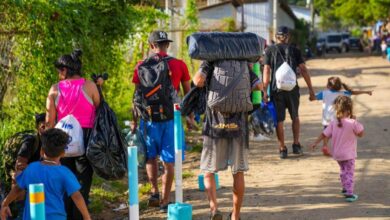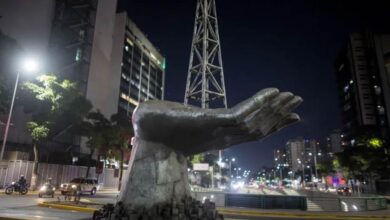Concerns about increased contagion and other news of the week
As the world learns to live in the midst of the pandemic and some practices must change, natural disasters hit Mexico and threaten Central America .

We tell you what were the most relevant news this week. / Photos: Rawpixel, Reuters
LatinAmerican Post | Juliana Suárez
Listen to this article
Leer en español: Preocupación por aumento de contagios y otras noticias de la semana
The Coronavirus continues to worry both health authorities and governments due to its large increase in cases in less and less time. Currently, the number of infections is increasing exponentially, and while at first it took around three months to reach the first million infections, today the same number was achieved in just one week.
The outbreaks worry countries that were already about to overcome the virus, forcing them to partially re-close some activities that had already been reactivated. At the same time, other countries, especially in Latin America, seek to prevent their health systems from collapsing while the peak has not yet arrived.
While this is happening, the world is still trying to find its normality and these are some of the most important news of the week.
1. Earthquake in Mexico
A 7.5-degree earthquake in southern Mexico shook much of the country , leaving six people dead and others injured. According to the BBC, "the National Seismological Service (SSN) indicated that the tremor occurred at 10:29 local time (16:29 GMT) and had its epicenter 23 km southeast of Crucecita, a town on the coast of the state of Oaxaca" .
Piso 19. Edificio Cuauhtémoc. Tlatelolco. #Sismo #Tlatelolco #CDMX #Mexico pic.twitter.com/hBid8REMgZ
— Saúl Briseño (@UnSaulll) June 23, 2020
Despite the fact that no serious damage was reported across the country, one of the concerns was around the coronavirus pandemic. In the middle of the evacuations, many people were conglomerated in the streets for several minutes, many of them without biosecurity elements such as face masks. Likewise, the evacuation in the main hospitals in the south of the country and in the capital led patients, doctors, and visitors to conglomerate in the same place.
Hours later, a sequel was added to this earthquake by the United States National Oceanic and Atmospheric Administration, warning of a possible tsunami for the Central American region. This, also as a consequence of the strong hurricane season that the Caribbean has been experiencing for a few weeks. According to the alert, there could be waves of up to three meters. However, this alert was later updated and the possibility was drastically reduced, warning of waves of between 0.3 and 1 meter, eliminating the danger.
2. Pilgrimage to Mecca
This event, held every year in late July, is one of the pillars of Islam, in Mecca, located in Saudi Arabia. This pilgrimage is attended by at least 2 million people, something that cannot happen this time due to the high risk that this presents with respect to the pandemic.
Taking into account the risks but also the religious value of this pilgrimage and the need to turn towards the new normality, Saudi Arabia has decided that it will be carried out under certain parameters. Many of the mosques in that country remained closed following a strict quarantine, and little by little they have been opening until reaching the largest event, which will take place between July 28 and August 2.
The main restriction will be that only a thousand people will be able to attend, a considerably lower number than normal. Another recommendation is that it can only be attended by people who live within the kingdom, avoiding any type of trip around the event. Likewise, there will be some restrictions for attendees such as age or suffering from some pre-existing chronic disease.
Despite the fact that Saudi Arabia has submitted a whole protocol that includes the test before entering and a strict quarantine when leaving Mecca, the World Health Organization reiterated the great risk that this represents. This, especially since Saudi Arabia is one of the Arab countries with the most infections.
Also read: COVID-19 lockdown reveals human impact on wildlife
3. Trump re-elected?
Although the United States presidential election is still several months away, the race for the presidency begins to take more and more shape and the latest events in the country have led Democrats to gain a small advantage.
The death of George Floyd and all the social protests this unleashed and the handling of the Coronavirus, added to two decisions last week by the Supreme Court, have weakened the image of the president and have brought Biden to the forefront. According to a poll conducted by the New York Times with Siena College, the Democratic candidate has a 14 point advantage, 50 vs. 36.
This, however, still means nothing more than a few points that can change at any time, since Biden still does not have the support of all minorities but has sought extra support in some traditionally Republican groups that have distanced themselves from Trump. Although some minorities of color and migrants may end up joining former President Biden's campaign, there are still more than 4 months in which the political race for the presidency can continue to change.
4. High temperatures at the poles
Climate change is on the rise, and the pandemic has not slowed it down. Just a few months ago, in February, Antarctica had the highest temperatures recorded in its history, even reaching 18 degrees Celsius.
This time, new record high temperatures were recorded on the other side of the world, in the Arctic. In Verkoyanks, an Arctic farmhouse in Russia, temperatures of up to 38 degrees Celsius were reported, when its highest temperature is normally -15. The United Nations Organization reported that "scientists say that the Arctic is heating at a rate that is twice that of the rest of the planet."
Although these data may not be entirely accurate as the World Meteorological Organization has not yet verified them and the Organization is just verifying the reports, there are abnormally high temperatures. However, the UN stated that "the region has extremes in both winter and summer, so temperatures above 30 degrees are not unusual in July, according to the Russian meteorological service." What is worrying is that these temperatures are becoming more and more frequent in recent years.
The trend at both poles is for large increases in their temperature peaks, which is why in recent months and years a record temperature has been seen both in the Arctic and in Antarctica. This, according to the UN president of geographic science professors at the University of Arizona, is due "to a lack of underlying snow in the region combined with global increases in temperature."





